Participating in a tour of the Killing Fields in Phnom Penh is an emotionally overwhelming experience. It feels like walking through a nightmare, only to realize it is a horrific reality. This haunting and thought-provoking journey stays with you long after your visit.
Cambodia has a complex and tragic history. A visit to the Killing Fields and the S21 Prison offers insights into the events that led to the mass genocide of the Cambodian people under Pol Pot and the Khmer Rouge regime.



Approximately two million people—about a quarter of Cambodia’s population—lost their lives between 1975 and 1979. During your visit to these memorial sites, you’ll hear the stories and walk in the footsteps of those men, women, and children who suffered torture, murder, and were buried here.
A tour of the Killing Fields in Phnom Penh serves as a profound lesson in history, reminding us of the importance of ensuring such tragedies are never repeated.
How to Get to the Killing Fields and S21 Prison
There are several ways to reach the Killing Fields and S21 Prison in Phnom Penh, Cambodia. You can choose a multi-day all-inclusive tour from Wendy Wu, a day trip from Phnom Penh, or explore the locations on your own.
Wendy Wu Tours to the Killing Fields and S21 Prison
Wendy Wu Tours offers a fantastic selection of all-inclusive tours in Cambodia and combined tours with Vietnam. One of their highlights is the Mekong Delta cruise, which starts in Ho Chi Minh City, Vietnam, and includes visits to the Killing Fields in Phnom Penh and the stunning temples of Angkor Wat in Siem Reap, Cambodia.
Click here for Wendy Wu Tour prices and reviews


Half Day Tour of S21 and the Killing Fields from Phnom Penh
We opted for a half-day tour of the Killing Fields and S21 Prison and can wholeheartedly recommend it. Our guide provided valuable insights into the events that occurred at the Killing Fields and within S21 Prison.
Click here for the Half Day Killing Fields Tour
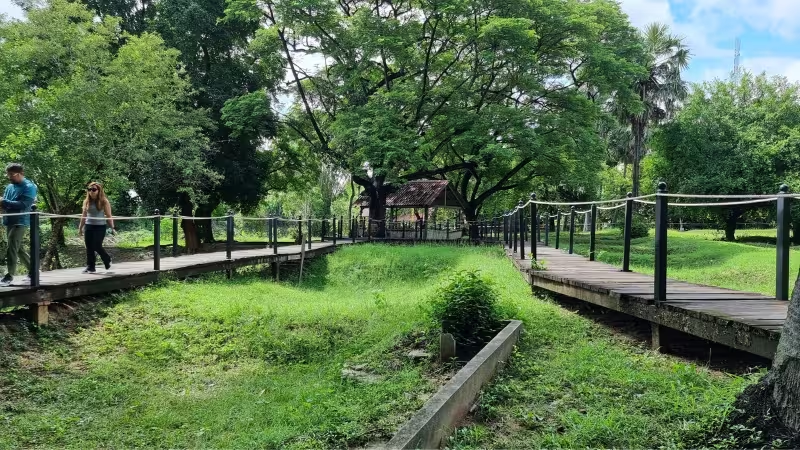

Full Day Tour of S21 and the Killing Fields from Phnom Penh
The full-day tour combines visits to the Killing Fields and S21 Prison with numerous attractions in Phnom Penh, including the Royal Palace, the Independence Monument, the Silver Pagoda, and more.
Click here for the full day Phnom Penh Attractions & Killing Fields tour
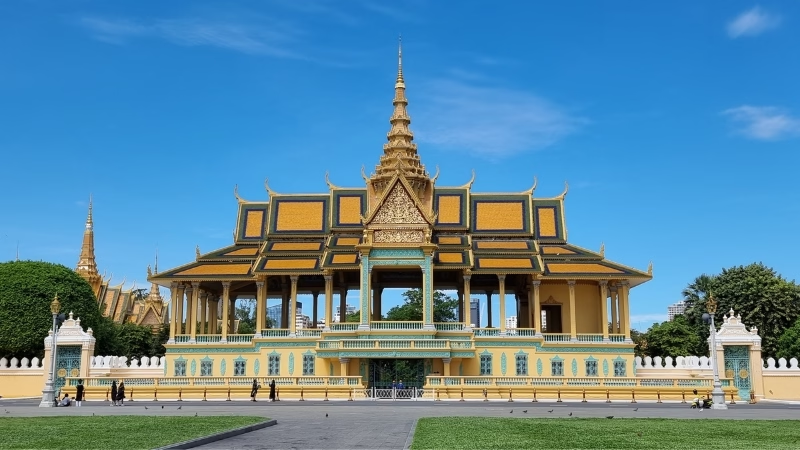

Visiting the Killing Fields Independently
If you prefer to visit the Killing Fields and S21 Prison on your own, you can rent audio guides at each memorial’s entrance.
Keep in mind that the Choeung EK Genocidal Center (the Killing Fields) is a 15-minute drive from central Phnom Penh, and you might find it challenging to arrange a return ride to the city.
Despite being confronting, I firmly believe the Killing Fields in Phnom Penh should be experienced by everyone. Understanding the extent of this tragedy is crucial, as it is just one of the countless killing fields across Cambodia.
The Killing Fields – Choeung EK Genocidal Center
The Phnom Penh Killing Fields are a 15-minute drive from central Phnom Penh, leading you through a scenic landscape of farmland producing various crops.
Upon arrival, you are greeted by a tranquil rural environment. The first indication of the sinister history is the sign reading “Choeung EK Genocidal Center,” or more commonly known as the Killing Fields.
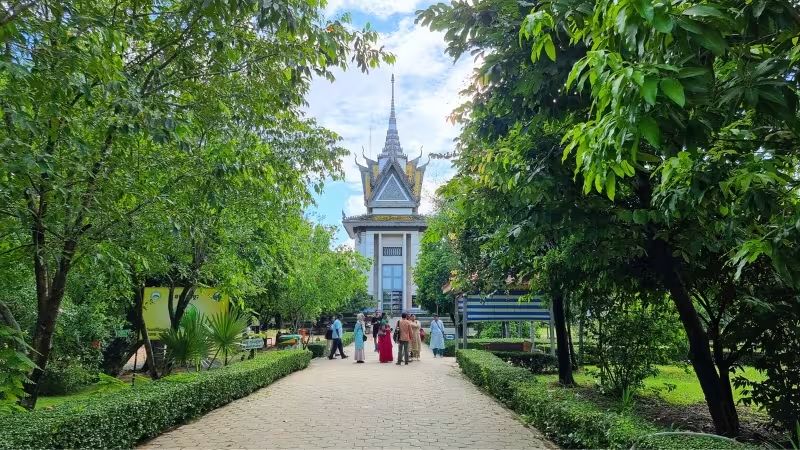

The Memorial Stupa
From afar, the architectural beauty of this towering Buddhist Stupa captures your attention. Upon closer inspection, however, you see the skulls stacked along its glass walls, reaching up to the roof. These remains belong to 9,000 individuals unearthed from the mass graves surrounding the site.
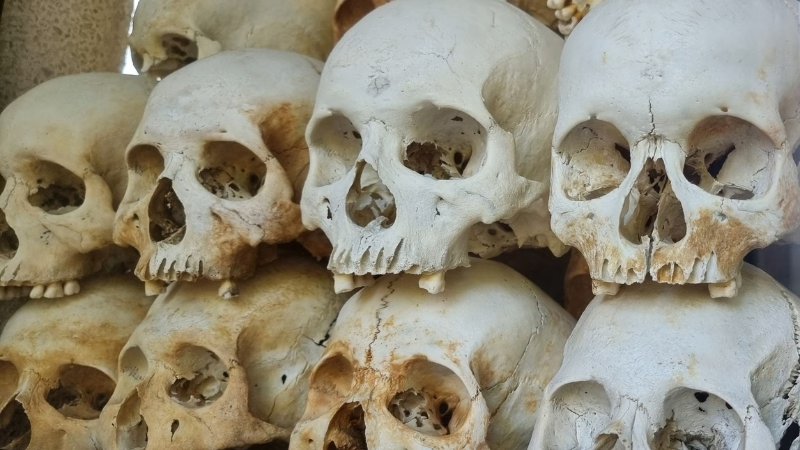

The Killing Tree
At first glance, it appears as if you have stepped into a whimsical forest, with a tree trunk adorned with colorful beads and bracelets. Surrounding its base are teddy bears and toys.
In reality, this tree was used as a tool of torture, where executioners would smash the skulls of children. A pink Barbie hairclip serves as a heartbreaking reminder of a childhood that never came to be, while the bangles and toys honor the children who lost their lives here.
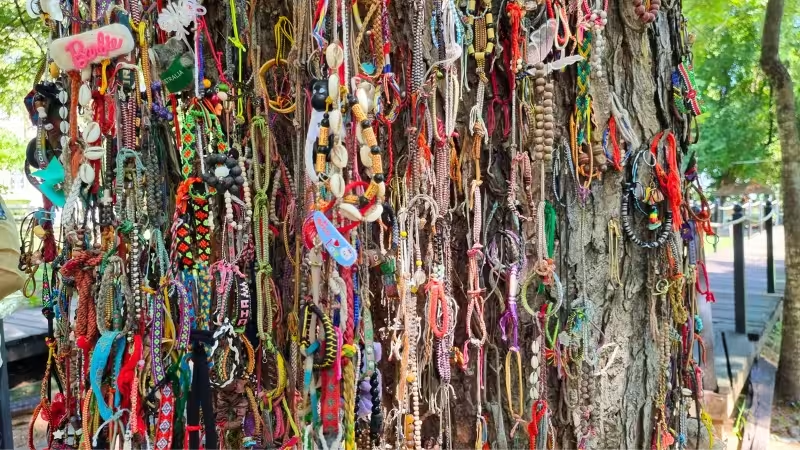

Transportation from S21 Prison to the Killing Fields
For secrecy, prisoners from S21 were transported to the Killing Fields at night. The executions were carried out quietly, without firearms. Victims were killed using rudimentary methods, such as hatchets, shovels, and hoes, or by being shoved into the sharp branches of a tree.
At the height of the killings, around 300 executions occurred daily, with an estimated 20,000 individuals being killed and buried in this area. As you walk through the fields, you may still see fragments of bones and clothing emerging from the soil.


While walking around the Choeung EK Genocidal Center, you will hear many more disturbing stories, which we leave for the guides during the Phnom Penh Killing Fields Tour to share.
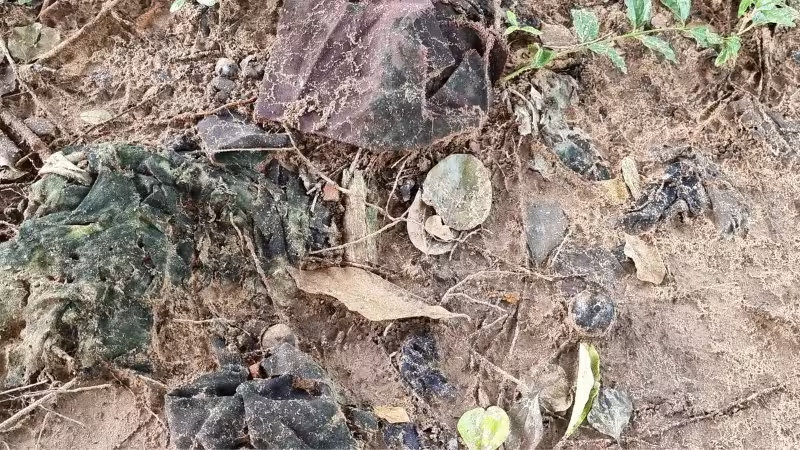

S21 Prison Phnom Penh – Tuol Sleng Genocide Museum
After visiting the Killing Fields, many people proceed to the Tuol Sleng Genocide Museum, also known as S21 Security Prison, located in Phnom Penh.
This museum memorializes S21, an interrogation and detention center housed in a former secondary school under the Khmer Rouge regime from 1975 to 1979.
If the visit to the Killing Fields was haunting, the Tuol Sleng Genocide Museum is even more disturbing, bringing a human face to this sorrowful chapter in Cambodian history. Of the estimated 20,000 individuals who were detained at S21, only 12 survived.
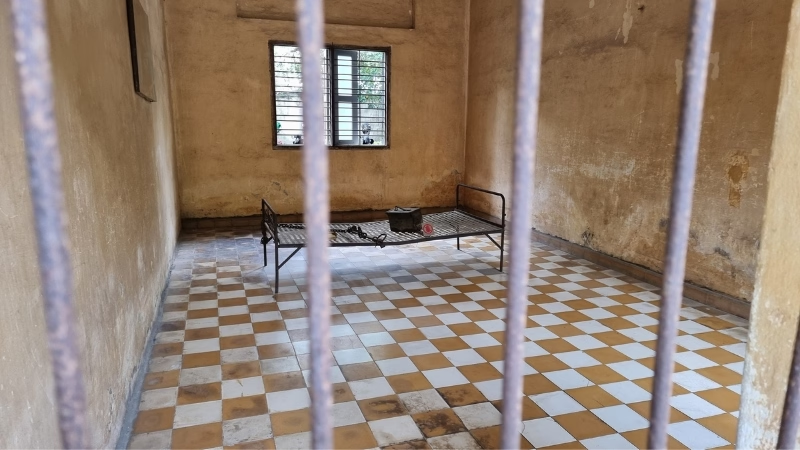

Prison Cells
Upon liberation of S21, authorities were met with a horrific smell emanating from within the building. Inside the larger cells, they found the bodies of tortured victims still shackled to their beds. Photographs of their decomposed remains are displayed on the walls of the cells.
As you navigate through S21, the cells diminish in size, some merely a meter wide, yet capable of housing up to four individuals. Many of these cramped spaces lacked windows for ventilation or light.
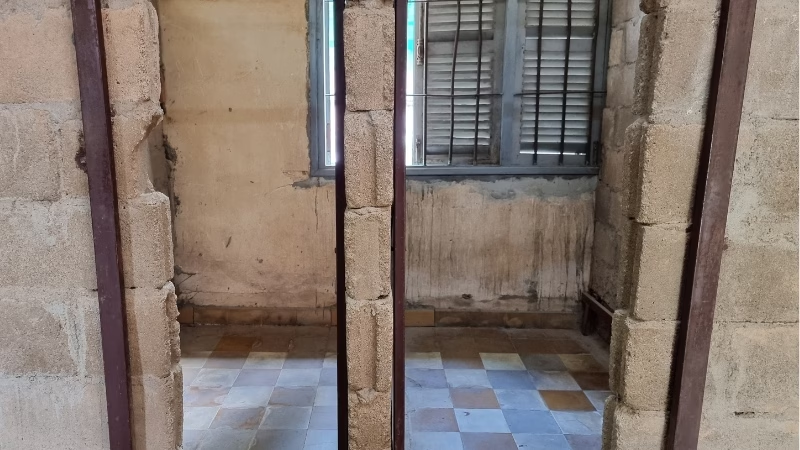

Museum Photographs
One of the most chilling aspects of the prison is the collection of photographs displayed on the walls. While most images were taken during the prisoners’ lives, a few were captured post-mortem to serve as warnings to others.
Two photos remain vivid in my memory: one depicts a mother holding her baby, her eyes filled with defiance and resignation, while the other features a teenage boy, exhausted, with dark circles under his eyes, a visible testament to the torture endured.
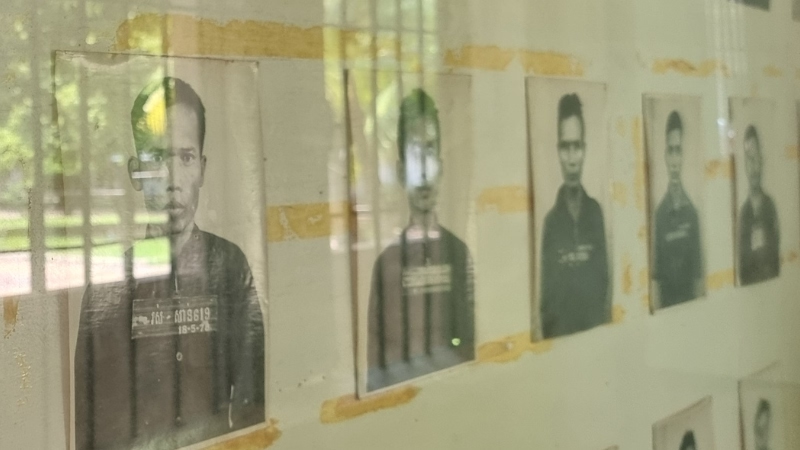

The Prisoners
Under Pol Pot, the Khmer Rouge pushed for an agriculturally based society that resulted in the separation of families, forcing children into farming communities. Intellectuals—such as teachers, lawyers, and doctors—were seen as threats and were arrested as spies, becoming political prisoners.
Even seemingly innocuous traits like wearing glasses or speaking a foreign language could result in imprisonment, leading to the incarceration of many innocent individuals.
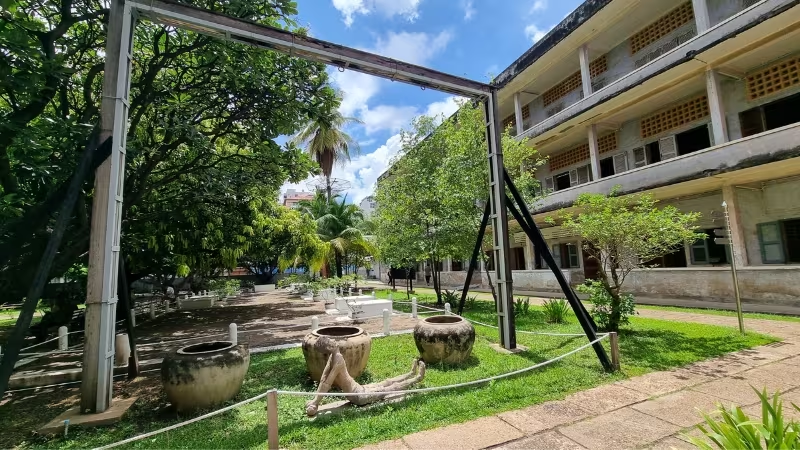

Survivors’ Stories
Only 12 of the 20,000 individuals who entered S21 Prison survived, and at the time of our visit, only two remained, both in their 90s.
Their stories are delivered through a translator. Both survivors recounted a nightmarish existence, often subsisting on cockroaches and rats, and facing horrific punishments from the guards, including being forced to lick excrement off the floor.


Cambodia Travel Tips
Most nationalities require a visa to enter Cambodia.
Check here for visa pricing.
For connectivity during your travels, we recommend using eSims, which are much easier and more convenient.
Click here to pre-purchase an eSim before your arrival.
Final Thoughts on the Phnom Penh Killing Fields Tour and S21 Prison
Taking a tour of the Killing Fields and S21 Prison is an emotional experience that elicits feelings of anger and disbelief about the cruelty humans can inflict on one another.
We questioned how a regime could orchestrate such fear and pain among its own people. A true leader would strive to improve the lives of their citizens, rather than treating them as mere tools of oppression.
A tour of the Killing Fields and S21 Prison is eye-opening, and I believe these sites must be visited. The memories of those who suffered—men, women, and children—deserve to be preserved as a caution against future atrocities.
PIN THIS TO YOUR TRAVEL PINTEREST BOARDS ↓



